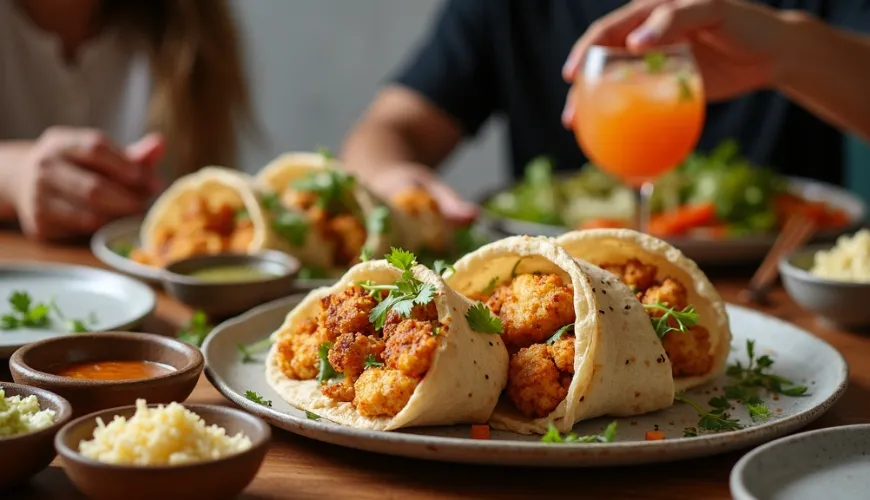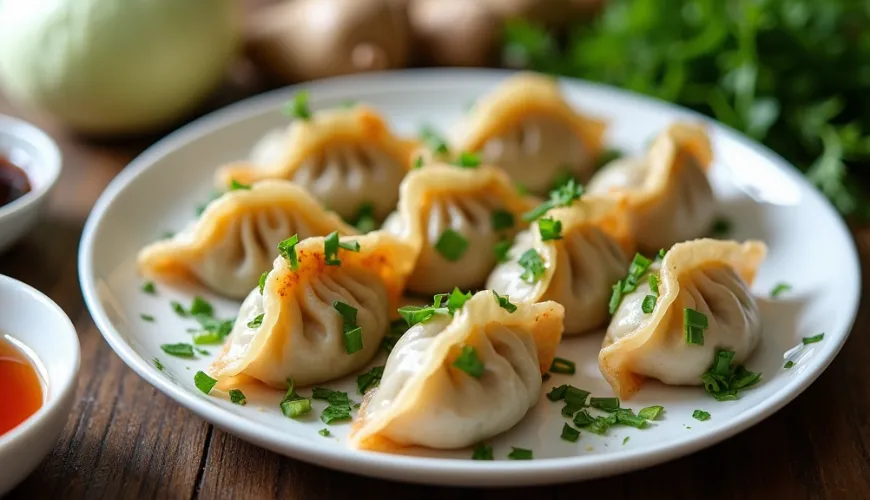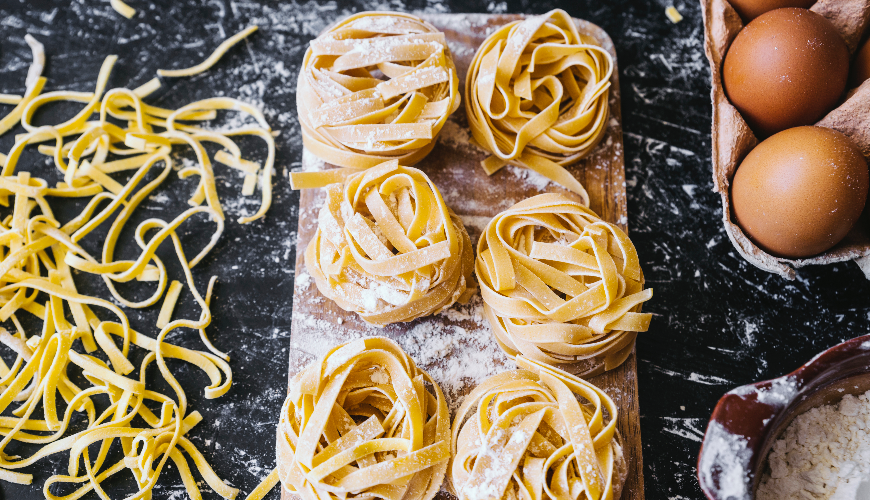
Gyoza dumplings as a great way to use up leftover food

Gyoza Dumplings - A Japanese Delicacy Winning Over Czechs
In recent years, Czech kitchens have been quietly conquered by a seemingly simple yet incredibly delicious Asian specialty – gyoza dumplings. These small dumplings, filled with meat or vegetables, are first pan-fried and then steamed, combining the delicacy of the dough with the intense flavor of the filling. Perhaps you've tasted them at a popular ramen bistro or a festival stall. But did you know you can make them at home with a bit of patience?
What began as a humble dish in China, where gyoza's predecessor is the jiaozi, has evolved in Japan into its own culinary category. The Japanese version of dumplings has captured the hearts of gourmets worldwide, including Czechs.
Why are gyoza dumplings so popular?
Upon first tasting, it's clear that these are not ordinary dumplings. The combination of a crispy bottom and softly steamed top, along with the juicy filling inside, creates a rich textural experience. Moreover, they can be filled with practically anything – from classic minced meat with garlic and ginger to vegan combinations with mushrooms, tofu, or cabbage.
Their preparation can also be a social event. In many Asian households, gyoza are made in a family setting – someone rolls the dough, another fills it, and someone else folds it. It's similar to how Czechs prepare Christmas gingerbread or homemade ravioli.
The secret to perfect gyoza dough
The foundation of every gyoza dumpling is properly prepared dough. While it might seem like just regular flour and water, getting the consistency right is key to success. The dough for Japanese gyoza dumplings should be soft, elastic, yet firm enough to not break during cooking.
The traditional recipe is surprisingly simple – plain flour, boiling water, and a pinch of salt. Boiling water is crucial as it partially "cooks" the flour, creating smooth, pliable dough. The dough is then allowed to rest for at least 30 minutes, ideally an hour, to make it easy to work with. It is then rolled out into thin sheets and cut into circles about 8–10 cm in diameter.
For those who don't want to prepare the dough from scratch, ready-made gyoza wrappers are available in Asian stores. However, the taste and texture of homemade dough are incomparable.
Step-by-step recipe for homemade gyoza dumplings
Making gyoza dumplings at home isn't as difficult as it might seem. The key is organization – preparing the dough, filling, and work area. The following recipe is a guideline, and you can adjust it to your taste.
Ingredients for the dough:
- 250 g plain flour
- 150 ml boiling water
- a pinch of salt
Ingredients for the filling:
- 250 g minced pork (or plant-based alternative)
- 1 cup chopped cabbage (Chinese or regular)
- 2 spring onions, chopped
- 1 clove of garlic
- a piece of grated ginger (about 1 cm)
- 1 tablespoon soy sauce
- 1 teaspoon sesame oil
- pepper and salt to taste
Mix the dough and let it rest while preparing the filling – thoroughly mix all the ingredients. Then roll out the dough into a thin sheet, cut out circles, and fill with about a teaspoon of mixture. Folding the dumplings is an art in itself – the edges are moistened with water and folded into the typical "fan" shape, ensuring the filling stays inside during cooking.
Prepared gyoza are first fried in oil until they are golden and crisp on the bottom, then a little water is added to the pan. The pan is covered with a lid to steam the top of the dumplings beautifully.
Gyoza in the Czech context
It's fascinating to observe how this traditional Japanese dish is gaining a place in Czech homes. Some chefs experiment with fillings inspired by Czech cuisine – for example, combinations of red beet and goat cheese, or smoked tempeh with sauerkraut. While purists may frown upon such ideas, these fusions demonstrate how versatile gyoza can be.
One example is a restaurant in Brno that offers gyoza with a filling of bryndza and nuts – a fusion of Slovakia and Japan that few would expect but surprisingly works. This approach shows that gyoza dumplings are not just a trend but a full-fledged part of modern cuisine that can adapt to local tastes.
Tips for perfect gyoza even without experience
When working with gyoza dumplings, one simple rule applies: the more you make, the better you'll get. The first batch might not be perfect, but with each subsequent dumpling, you'll gain a feel for the dough, the amount of filling, and folding.
Are you ready to make dumplings? Here are a few tips to make it easier. Divide the dough and keep the rest covered – it dries out quickly. Keep the filling on the dry side to prevent it from leaking out during cooking. A non-stick pan with a lid, cast iron, or another heavy classic is best for frying. And if you want to save time next time, make more and freeze them – then just pop them into water, and you're done.
Gyoza as part of sustainable cooking
An interesting aspect is that gyoza dumplings can be a great way to use leftovers. Leftover cooked lentils, vegetables from yesterday's dinner, or the last pieces of tofu in the fridge? With a bit of seasoning, they become a luxurious filling for dumplings. In a time when there's increasing emphasis on reducing food waste, gyoza is a small but tasty step in the right direction.
Moreover, by using organic ingredients, local vegetables, or plant-based alternatives, gyoza can easily be prepared in line with ecological and ethical principles. Whether you choose a meatless version or a classic one, the key is consciously choosing quality ingredients.
A small dish that speaks volumes
Gyoza might seem like a simple dumpling, but it carries stories of multiple cultures, generations, and culinary experiments. It is a dish that connects – families, friends, and flavors. As the Japanese writer Haruki Murakami once said, “The food we share connects us more deeply than words." And at the moment when you sit together at the table, folding dumplings or just joyfully tasting them, this idea perfectly resonates.
Whether you decide to prepare gyoza according to the traditional recipe or dare to experiment on your own, one thing is certain – you will discover a dish you will love not only for its taste but also for everything it symbolizes.

